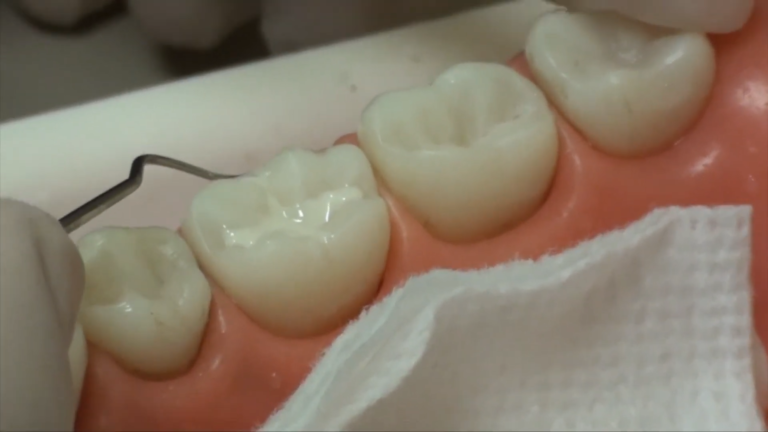Best and Worst Foods for Children’s Dental Health
As parents, we put so much thought into what our kids eat—making sure they get enough vitamins, protein, and hydration. But what often gets overlooked is how those food choices impact their teeth. While brushing and flossing are key to keeping a child’s mouth healthy, the food they eat every day plays an equally important role in preventing cavities, strengthening enamel, and supporting overall oral health.
So, let’s break it down. What are the best foods for children’s dental health—and which ones are better left off the plate (or at least enjoyed in moderation)?
The Best Foods for Healthy Teeth
When it comes to protecting your child’s teeth, what they eat is just as important as how well they brush. Certain foods don’t just nourish the body—they actively support strong enamel, promote healthy gums, and help keep harmful bacteria in check. Let’s explore some of the most tooth-friendly options and why they matter.
1. Crunchy Fruits and Vegetables
Think apples, raw carrots, celery, cucumbers, and bell peppers. These crisp fruits and vegetables aren’t just a great source of vitamins and fiber—they also have a natural cleansing effect on the teeth. Their firm texture helps mechanically remove plaque and food particles as your child chews. At the same time, the act of chewing stimulates saliva production, which plays a key role in neutralizing acids and washing away sugar before it has a chance to do damage. The high water content in these foods further helps to dilute natural sugars and refresh the mouth between brushings.
2. Dairy Products
Milk, cheese, and plain yogurt are rich in tooth-strengthening nutrients like calcium and phosphate—essential minerals for building and maintaining hard, healthy enamel. Cheese has a particularly powerful effect: not only does it neutralize harmful acids in the mouth by raising the pH level, but it also boosts saliva flow, which provides natural protection against cavities. Unsweetened yogurt is another dental superstar; it delivers probiotics that may help reduce harmful bacteria in the mouth, all while being gentle on young stomachs.
3. Leafy Green Vegetables
Spinach, kale, Swiss chard, and other leafy greens pack a serious nutritional punch for developing teeth. These veggies are loaded with calcium, folic acid (a type of B vitamin important for cell growth and gum health), and antioxidants that support both soft tissue and enamel. Because they’re low in sugar and high in fiber, leafy greens help scrub the teeth during chewing and contribute to an overall cleaner mouth. If your child is picky, try blending greens into smoothies, mixing them into pasta sauces, or sneaking them into omelets.
4. Water (Especially Fluoridated)
No drink is more important—or more underrated—for dental health than plain water. Water rinses away food debris, dilutes acids, and helps maintain a stable, healthy pH level in the mouth. In areas with fluoridated tap water, your child also gets an extra layer of cavity protection with every sip. Fluoride strengthens enamel and makes it more resistant to decay. Encourage your child to drink water throughout the day, especially after snacks, meals, or sweet treats, to help minimize sugar residue and acid buildup.
5. Nuts and Seeds
Crunchy nuts like almonds and cashews, and seeds like sunflower or chia seeds, are naturally low in sugar but rich in essential minerals such as calcium, magnesium, and phosphorus. These nutrients play a direct role in building strong bones and teeth. Their crunchy texture also helps scrub the teeth clean while stimulating the production of protective saliva. Just be mindful of choking hazards—choose sliced, ground, or age-appropriate forms for younger children to ensure safe chewing.
6. Eggs and Lean Proteins
Eggs, chicken, turkey, fish, tofu, and beans are not only excellent sources of protein but also provide phosphorus and vitamin D—two key players in supporting calcium’s role in enamel development. Vitamin D, in particular, helps the body absorb calcium efficiently, while phosphorus contributes to the mineral matrix that strengthens both teeth and bones. These proteins also help repair tissue and promote healing, which benefits growing mouths that are constantly changing.
The Worst Foods for Children’s Teeth
As much as we want to treat our kids to snacks and sweets now and then, it’s important to know which foods can silently sabotage their dental health. Cavities don’t appear overnight—they form gradually as a result of frequent sugar and acid exposure, often from foods that seem harmless or are part of a child’s daily routine. Let’s take a closer look at the biggest dietary culprits that contribute to tooth decay in children, and why they’re so damaging to developing smiles.
1. Sticky, Chewy Candies (and Yes—Even Dried Fruits)
Caramels, gummy candies, fruit snacks, taffy, and similar chewy treats are some of the worst offenders when it comes to cavity formation. The reason? These sugary substances cling to the surface of the teeth—and worse, settle into the grooves of molars—where saliva and brushing can’t easily reach. This prolonged contact gives cavity-causing bacteria an all-you-can-eat buffet of sugar to convert into enamel-eroding acids.
Even seemingly healthy options like raisins, dried cranberries, and fruit leathers can be just as harmful. Though naturally derived, dried fruits are dense in sugar and tend to stick to teeth in the same way as candy. The key danger here isn’t just the sugar content—but how long that sugar stays on the tooth surface.
2. Sugary Drinks (Liquid Sugar in Disguise)
Juice boxes, flavored milks, sodas, sweetened teas, and sports drinks are deceptively damaging. While they may seem harmless—especially if labeled “organic” or “100% juice”—these beverages are high in sugar and often highly acidic. Every time your child takes a sip, their teeth are bathed in sugar, which fuels the bacteria that cause decay. What’s more, the acidity weakens the enamel, making it easier for cavities to form.
Frequent sipping throughout the day is especially problematic because it doesn’t give the mouth time to recover. Instead of one short exposure, the teeth are constantly under attack. If your child does enjoy juice, it’s best to limit it to mealtimes and follow it with water to rinse away leftover sugars and acids.
3. Refined Starchy Snacks (The Sneaky Cavity Builders)
Crackers, white bread, pretzels, and potato chips might not taste sweet, but once they enter the mouth, they begin breaking down into simple sugars. These sugars quickly become food for bacteria, contributing to the same decay process as candy. The starchy residues also have a tendency to stick in the deep pits and fissures of molars, especially in children who are still learning to brush thoroughly.
What makes these snacks even trickier is that they’re often viewed as “safe” or neutral by parents—but over time, they can be just as damaging as sugar if they’re consumed frequently without proper oral hygiene.
4. Sour Candies and Acidic Foods (Double Trouble for Enamel)
Sour candies present a particularly harsh one-two punch: they’re packed with sugar and are intensely acidic. This acidity softens the enamel on contact, weakening the tooth’s outer layer and making it more susceptible to erosion. Combine that with sugar that feeds bacteria, and you have a high-risk recipe for cavities.
Similarly, while citrus fruits like oranges, lemons, and grapefruits offer nutritional benefits, they’re also highly acidic. Regular exposure to citrus without proper rinsing or dental care can gradually wear down the enamel. It’s best to enjoy these fruits as part of a meal and rinse the mouth with water afterward. Avoid brushing immediately, as the softened enamel is more vulnerable to abrasion.
5. Constant Snacking and Grazing (Even on “Healthy” Foods)
It’s not just about what your child eats—it’s about how often they’re eating. Snacking all day, even on healthy foods like crackers, dried fruit, or granola, keeps the mouth in a near-constant acidic state. Every time your child eats, the pH level in the mouth drops, giving bacteria the perfect environment to thrive.
When the teeth don’t get breaks between meals to recover and remineralize, enamel stays under attack. To protect their teeth, try to encourage structured meals and limit snacks to once or twice a day. In between, offer water and avoid constant grazing.
Tips for Parents: Balancing Nutrition and Dental Health
Creating healthy eating habits for your child doesn’t have to feel overwhelming. With just a few intentional choices each day, you can support strong teeth, prevent cavities, and help your child build a positive relationship with food and dental care. Here are some detailed, practical strategies to keep both your child’s smile and overall nutrition on track:
1. Prioritize Whole Foods Over Processed Snacks
When you’re packing a lunchbox or preparing an after-school snack, aim for real, whole foods instead of highly processed, sugar-laden options. For example, offer your child a fresh apple or a handful of grapes instead of gummy fruit snacks or sugary granola bars. Whole fruits contain natural sugars balanced with fiber and water, which help reduce their impact on teeth. Plus, their texture encourages chewing and saliva production, both of which help naturally clean the mouth. Similarly, swap out packaged crackers or cookies for raw veggie sticks, plain yogurt, or a slice of cheese—foods that deliver real nutrients without coating the teeth in sticky starch or sugar.
2. Make Water the Default Drink Throughout the Day
Hydration is essential, but what your child drinks is just as important as how much. Juice, flavored milk, soda, and sports drinks often contain more sugar than you might expect, even in small servings. These beverages feed the bacteria that cause tooth decay and can lead to enamel erosion if sipped frequently. Instead, teach your child to reach for water first. A great way to encourage this habit is by giving them a colorful, spill-proof water bottle with fun stickers or characters they love—something they’ll be excited to carry and sip from during school, sports, or playtime. If your local water supply is fluoridated, that’s an added bonus—it strengthens enamel and helps prevent cavities over time.
3. Wait Before Brushing After Acidic Foods
Many parents are surprised to learn that brushing immediately after eating can actually harm the teeth—especially if your child has just eaten something acidic like citrus fruit, tomatoes, or sour candy. Acidic foods temporarily soften the enamel, and brushing too soon afterward can cause that softened enamel to wear away. Instead, have your child rinse their mouth with water after acidic meals or snacks and wait at least 30 minutes before brushing. This allows time for saliva to naturally neutralize the acid and begin the remineralization process.
4. Use the End of Meals to Naturally “Clean” the Teeth
You can use the final bites of a meal as an opportunity to support your child’s oral health. Encourage them to finish with a tooth-friendly food, such as a slice of cheese, a few raw carrot sticks, or a piece of apple. These foods help stimulate saliva and physically clean the tooth surfaces by sweeping away lingering food particles and sugars. It’s a simple trick that can be especially helpful after meals when brushing isn’t possible—like during school lunches or family outings.
Final Thoughts
The foods your child eats every day can either support or sabotage their dental health. With a few smart choices—and a little creativity—you can help protect those little teeth from decay and set the stage for a lifetime of healthy smiles.
Remember: good dental habits start at the dinner table just as much as they do at the sink.






